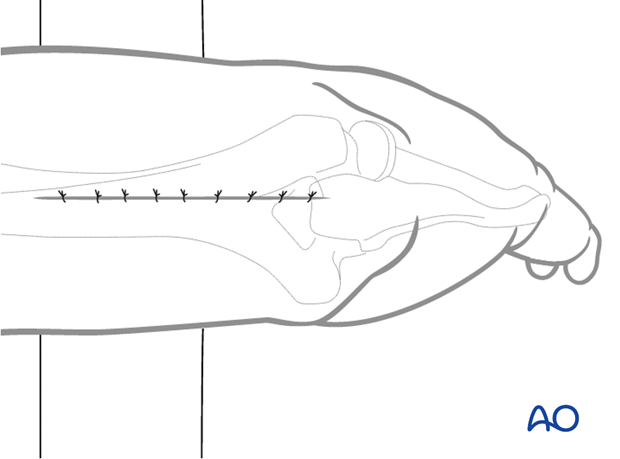Retrograde nailing approach to the humeral
1. Introduction
The retrograde nailing approach requires opening the medullary canal just proximal to the olecranon fossa.

2. Landmarks
Landmarks are:
- Medial supracondylar ridge
- Lateral supracondylar ridge
- Tip of the olecranon
- Humeral shaft
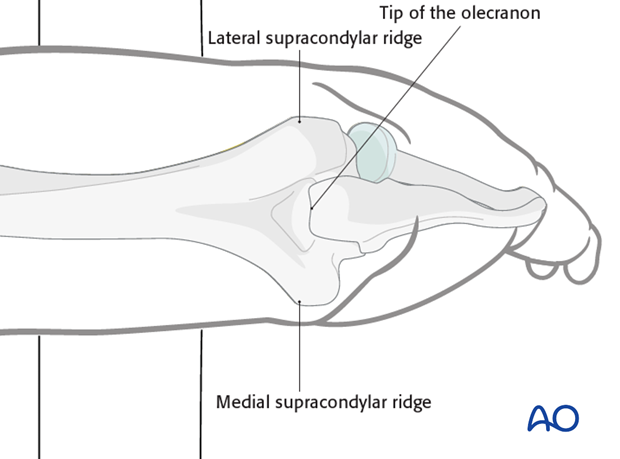
3. Incision and deep dissection
Make an 8-10 cm straight skin incision on the dorsal aspect of the upper arm, proximally from the tip of the olecranon and in line with the longitudinal axis of the humerus.
Sharply incise the subcutaneous layer.
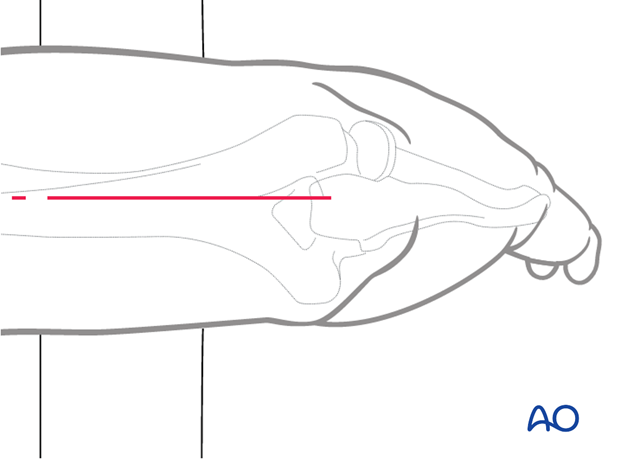
Identify the ulnar nerve.
Split the triceps tendon longitudinally. Separate the edges with right angle retractors.
Expose the dorsal supracondylar region of the humerus.
Protect the elbow joint capsule during preparation of the dorsal bone surface.
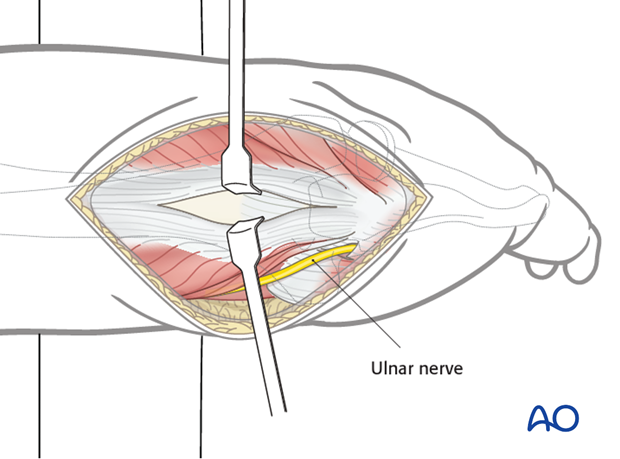
The visible area of the bone should extend proximally for about 25 mm from the edge of the olecranon fossa for optimal access to explore the entry point (green triangle).
Palpate the medial and lateral columns of the distal humerus to confirm the bony anatomy, especially the center of the humerus.

4. Wound closure
Irrigate and clean the wounds.
Close the incised triceps tendon and the posterior fascia of the upper arm with sutures in layers.
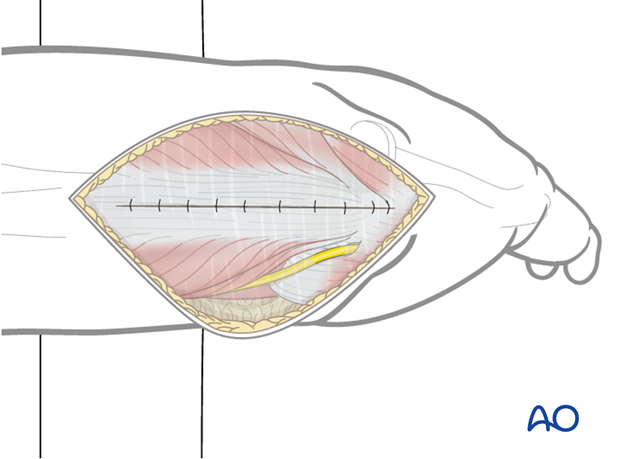
One drainage tube may be inserted into the main wound.
Close the skin incision. For the stab incisions, perform skin closure only.
